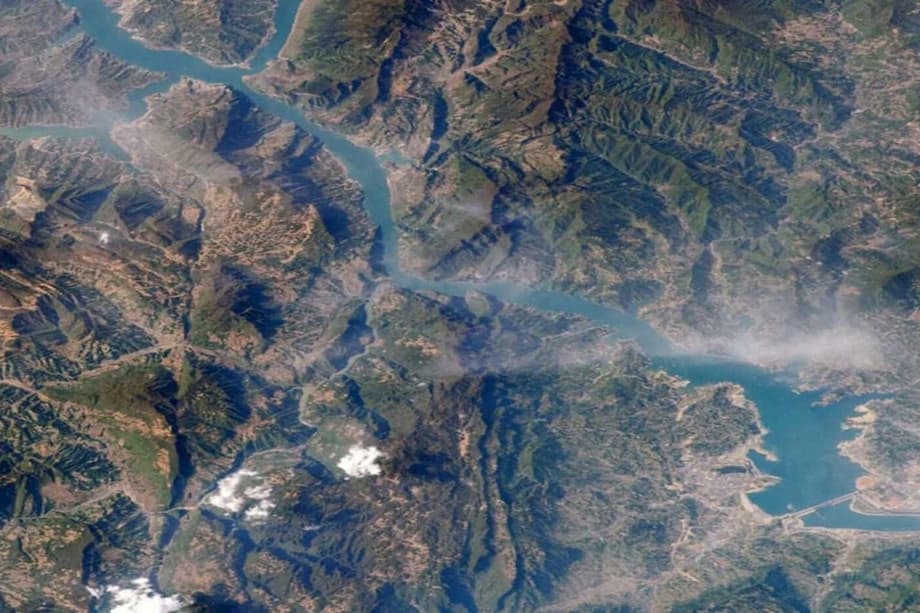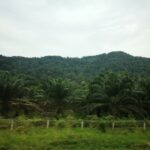How a Tibetan plateau dam is reshaping the power mix
China is elevating hydropower to a central role in its clean energy system, combining record wind and solar installations with new mega projects in some of the most challenging terrain on Earth. On the Tibetan plateau, engineers have brought high altitude stations online and moved ahead with a vastly larger complex on the Yarlung Tsangpo, part of a strategy to stabilize the grid, cut emissions, and send western electricity east to the country’s industrial heartlands. The approach pairs variable renewables with water driven generation that can run around the clock or ramp quickly to balance the system.
- How a Tibetan plateau dam is reshaping the power mix
- What is being built on the Yarlung Tsangpo
- Why high altitude hydropower matters for the grid
- Construction at extreme altitude
- Environmental and social stakes
- Downstream concerns in India and Bangladesh
- Economics and supply chains
- Does hydropower reduce wind and solar
- How this fits into the Third Pole hydropower boom
- Key Points
One recently completed high altitude plant on the plateau is reported to produce on the order of 11 billion kilowatt hours a year, enough to serve millions of households. It is a showcase for how steep river gradients in mountain valleys can deliver large amounts of power with relatively compact footprints. China presents these projects as clean and practical, while critics warn that the plateau’s ecosystems and fragile geology face heavy pressure as construction accelerates.
Beijing’s flagship build is the planned Medog hydropower complex on the lower Yarlung Tsangpo, a transboundary river that becomes the Brahmaputra in India and then the Jamuna in Bangladesh. The project is designed to dwarf any existing hydropower station, and it anchors an energy policy that seeks both carbon reductions and energy security during peak demand seasons.
What is being built on the Yarlung Tsangpo
The Medog project, sometimes referred to as the Motuo hydropower station, is authorized at an installed capacity of about 60,000 megawatts with a planned annual output near 300 billion kilowatt hours, roughly three times the generation of the Three Gorges Dam. Engineers intend to harness the immense drop at the river’s Great Bend, where the Yarlung Tsangpo falls by thousands of meters as it carves the deepest canyon on land. The plan calls for a cascade of five stations and long diversion tunnels through the Namcha Barwa massif to pass water through turbines, then return it to the river.
State planners have tied the project to national climate goals, a larger push to modernize Tibet’s economy, and long distance power transmission to coastal provinces. Its price tag, reported at more than one trillion yuan, reflects the challenge of tunneling, geotechnical stabilization, and building high voltage lines in extremely remote country. Commercial operation is targeted for the early 2030s if schedules hold.
Why high altitude hydropower matters for the grid
Hydropower plays two roles that are hard to match at scale. It can deliver steady baseload power, and it can also respond within minutes to changes in demand or dips in wind and solar output. Mountain rivers with large vertical drops provide high hydraulic head, which means more potential energy for each unit of water that passes through a turbine. The result is high power density and strong flexibility with relatively compact reservoirs or, in some cases, run of the river configurations that store little water.
China’s wind and solar fleets are the largest in the world, but they are variable by nature. Clouds, calm days, and the daily cycle of sunlight can leave gaps that must be filled instantly to keep the grid frequency stable. Hydropower can ramp up and down quickly, a service known as balancing or regulation. It also helps reduce curtailment, a term for when grid operators tell wind or solar plants to reduce output because supply exceeds demand or transmission is saturated. When flexible hydro is available, more variable generation can be accepted without destabilizing the system.
How water power complements wind and solar
In practice, operators use a portfolio approach. During sunny and windy hours, hydro plants can conserve water or run at lower output. When clouds roll in or winds fade, hydro ramps up. The reverse happens during peak evening demand. In wet seasons, hydropower can dominate in some provinces, which leads to temporary reductions in wind and solar dispatch. That pattern does not signal a retreat from renewables. It reflects a balancing act where water, wind, and sun are scheduled together to meet demand at the lowest cost without risking blackouts.
Construction at extreme altitude
Building large dams at high elevations is a test of logistics and endurance. Thin air strains workers and machinery, winter temperatures limit pour schedules for concrete, and steep slopes drive complex geotechnical designs. On the Tibetan plateau, project managers have relied on helicopter lifts, mountain roads, and emergency medical stations to keep crews supplied and safe. Tunnels through hard rock require precise blasting and reinforcement to prevent collapses, and access portals must be stabilized to withstand freeze thaw cycles and heavy rains.
Earthquake risk and landslides are central engineering concerns in this region. The Yarlung Tsangpo valley lies near active faults, and parts of the plateau are prone to large slope failures that can dam rivers on their own. Designers incorporate seismic protections for dams, spillways, and powerhouses, build landslide monitoring into operations, and plan for extreme flood scenarios with redundant gates and emergency drawdown procedures. These measures add cost and time but are vital for safety.
Environmental and social stakes
The plateau is home to unique ecosystems and culturally important landscapes. Hydropower construction can fragment habitats, disturb sediment flows, and alter seasonal river rhythms that support fish and floodplain agriculture. Chinese project documents stress ecological protection, including fish migration passages, soil and vegetation restoration on disturbed slopes, and environmental flow rules that keep a minimum amount of water in the river channel.
Independent researchers and advocacy groups caution that such measures may not fully offset impacts in a region with high biodiversity and high rates of endemism. Reservoirs can emit methane from submerged vegetation, and frequent landslides can interact with artificial reservoirs in complex ways. Social issues also loom large. While the Tibetan plateau has lower population density than the Yangtze valley, relocations still occur, and some sites include monasteries and traditional villages. The relocation process, compensation, and cultural preservation are sensitive matters that can shape perceptions of the projects for decades.
Run of the river and storage
Chinese planners describe parts of the cascade as run of the river, meaning water is diverted through tunnels to turbines and then returned to the channel with limited storage. That approach can reduce the size of reservoirs and the area of land flooded, though environmental changes still occur. Where larger reservoirs are used, improved sediment management and flood routing become important to maintain downstream agriculture and reduce erosion.
Downstream concerns in India and Bangladesh
Because the Yarlung Tsangpo becomes the Brahmaputra in India and the Jamuna in Bangladesh, downstream communities watch the project closely. Both countries have raised concerns about water supply, agriculture, and flood risk, and have asked for data sharing and detailed assessments. China argues that the planned operations will not harm neighbors and that most of the Brahmaputra’s annual flow is generated by rainfall after the river leaves Tibet.
Chinese Premier Li Qiang has promoted the project as a signature national build. He has described it as a project of the century and framed it as central to clean energy and regional development.
Chinese Premier Li Qiang called the Yarlung Tsangpo build a “project of the century,” saying it must advance clean energy while protecting the environment.
Leaders in India have voiced sharp worries about both chronic water stress and the danger of sudden releases during emergencies. Arunachal Pradesh chief minister Pema Khandu has warned that a dam burst or a large release could devastate communities along the Siang and Brahmaputra.
Pema Khandu, chief minister of Arunachal Pradesh, said the new upstream dam could act like a “water bomb.” He warned that a sudden release would destroy property, land, and human life along the Siang belt.
India’s Ministry of External Affairs has pressed for transparency and safeguards in formal communications.
India’s Ministry of External Affairs said it had urged Beijing to “ensure that the interests of the downstream states of the Brahmaputra are not harmed by activities in upstream areas.”
Hydrologists note that run of the river designs without large storage may limit long term flow alterations, but control over timing and short term flow changes still matters for flood management, fisheries, and irrigation intake systems. That is why routine data sharing and joint protocols for emergency conditions are critical for confidence and cooperation.
Economics and supply chains
Large dams mobilize a wide slice of the economy. The Medog build is expected to support demand for steel, cement, heavy equipment, transmission hardware, and specialized tunneling services for years. Commodity analysts already view the project as a source of steady orders that can absorb excess capacity in steelmaking and support prices for iron ore exporters. On site, builders will need high grade concrete that can cure in cold temperatures, corrosion resistant steels, and turbines that can handle unique pressure and flow conditions.
For Tibet, project payrolls and new roads and grid connections can raise local incomes, though the benefits arrive with construction traffic, land acquisition, and cultural change. At the national scale, the complex will feed power into ultra high voltage lines that cross thousands of kilometers to eastern factories and cities, curbing the need to run coal units at full output during peak demand periods.
Does hydropower reduce wind and solar
Reports that China is turning away from wind and solar because of new hydropower are not supported by the data. The country continues to set new records for both technologies and plans even larger additions. What is changing is dispatch. In river basins with strong hydropower seasons, grid operators sometimes scale back wind and solar output to maintain stability when water driven generation dominates. The reverse happens in dry spells or during sunny and windy surges when hydro can step back to let variable renewables run. The long term direction remains a bigger and more flexible mix.
China is also adding pumped storage plants that move water uphill when there is excess wind and solar and reclaim the energy by running downhill through turbines at night or during peaks. This storage, combined with flexible hydropower and long distance transmission, reduces curtailment and helps keep coal generation on a downward trend as a share of total supply.
How this fits into the Third Pole hydropower boom
The Tibetan plateau and surrounding ranges are sometimes called the Third Pole because of their vast ice and snow. They feed many of Asia’s great rivers. Since 2000, dam building across these basins has accelerated as countries move electricity from mountains to megaregions. Researchers describe this as the rise of powersheds, where distant supply zones are tied to faraway demand centers by high voltage lines and large financial flows. China is the most advanced example of this pattern, with western rivers powering coastal industry and cities.
Cross border rivers make the model more complex. Energy security, water security, and regional politics intersect on a daily basis. Careful operation, robust data sharing, and credible environmental oversight can reduce friction. Without those pieces, dams can become flashpoints even when they deliver large amounts of clean electricity.
Key Points
- China is advancing a massive hydropower build on the Yarlung Tsangpo in Tibet, planned at about 60,000 megawatts and 300 billion kilowatt hours a year.
- A separate high altitude plant on the plateau already produces around 11 billion kilowatt hours annually, highlighting the region’s hydropower potential.
- Hydropower provides steady output and fast ramping, which helps balance record levels of wind and solar on China’s grid.
- The Medog complex includes a cascade of stations and long diversion tunnels at the Great Bend, with operation targeted for the early 2030s.
- Environmental measures include fish passages and slope restoration, though experts warn of biodiversity loss, reservoir methane, landslides, and seismic risks.
- India and Bangladesh have raised downstream concerns and called for transparency and data sharing to manage flood and irrigation risks.
- Premier Li Qiang labeled the project a project of the century and tied it to clean energy and regional development goals.
- The build is expected to stimulate demand for steel, cement, and transmission equipment and support the West to East power transfer program.
- Claims that hydropower is replacing wind and solar are inaccurate at the national level; the technologies are complementary and dispatched together.
- The Tibetan plateau sits at the center of a wider Third Pole hydropower boom that moves mountain electricity to distant megaregions.




